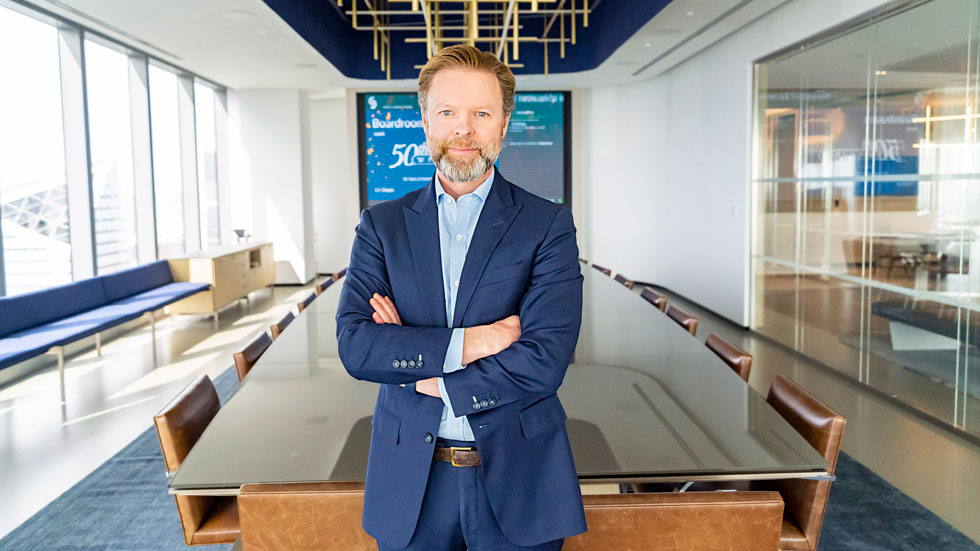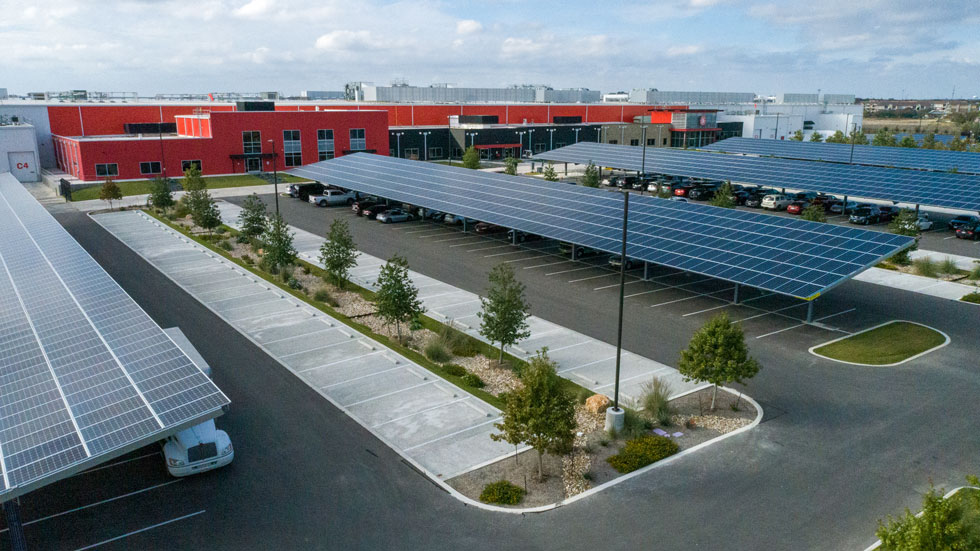Fifty years since its founding, W. P. Carey (NYSE: WPC) has evolved into a pure play net lease REIT positioned to benefit from a simplified strategy, better quality earnings, and increased scale. “Our future has never looked brighter,” says CEO Jason Fox.
Headquartered in New York City, W. P. Carey operates a diversified portfolio of operationally critical net lease properties. The REIT invests primarily in single-tenant, industrial, warehouse, and retail properties located in the United States and Northern and Western Europe, under long-term net leases with built-in rent escalations.
W. P. Carey has had many milestones over the past half-century. The most recent one was its official exit from the non-listed REIT space in 2022 when it completed a $2.2 billion merger with CPA®:18, one of numerous investment funds the company began issuing in 1979 for individual investors. W. P. Carey acted as an advisor to the non-listed REIT.
Fox, who joined W. P. Carey in 2002 and has been CEO since 2018, says the transaction “closed an important chapter in our history, but also provided a nice catalyst with investors to grow the business.” It’s a move that has found favor with analysts too. Mitchell Germain, managing director at JMP Securities, says the company’s exit from non-traded REITs means “you’re looking at a very predictable earnings stream.”
Other milestones during the past 50 years include a New York Stock Exchange listing in 1998, which initiated a 25-year streak of rising annual dividends for shareholders. The year also saw W. P. Carey’s first investment in Europe, followed by the opening of its London office the year after. The company converted to a REIT in 2012, expanding its institutional ownership and diversifying the shareholder base.
Fox says the REIT’s diversified investment approach “gives us the ability to invest across property types and across geographies and allows us to start from the widest possible funnel and focus in on the best opportunities that we see, both from the quality as well as from a risk return perspective.”
Uptick in Activity
Fox acknowledges that the last year hasn’t been without its challenges. “For REITs, and really just companies across the board, it changed how everyone views their cost of capital, and in particular, the cost of debt,” he says.
Fox says W. P. Carey was proactive over the past year and into the beginning of this year, selling equity forwards, or contracts to issue stock, and at the end of the first quarter had close to $400 million available to settle. In addition, the company has a $1.8 billion revolving credit facility. “We're sitting on ample liquidity, and have proven access to various forms of capital, so we're in a very good position to execute on new investments from a capital standpoint,” Fox says. Recent upgrades by S&P and Moody’s attest to that fact.
From a transaction perspective, sellers were slow to adjust to market volatility and the ensuing valuation adjustments in 2022, Fox says. That had changed by the end of the year in the U.S., allowing meaningful deals to resume, he adds.
“I think that we'll see more activity going forward. It's a good environment for us in that when there's dislocation or distress, especially when our portfolio has held up extremely well, our cost of capital—while it's increased—is still quite competitive, especially relative to our peers and many other sources of capital,” Fox says.
Germain at JMP notes that W. P. Carey’s “significant” amount of liquidity, and their advantage in accessing capital compared to their competitors, has enabled the REIT to be “pretty aggressive” on the acquisition front. “Certainly, momentum is in their favor,” he says.
A recent example of that momentum is W. P. Carey’s approximately $468 million sale-leaseback in early April of a portfolio of four pharmaceutical research and development and manufacturing campuses with Apotex Pharmaceutical Holdings, Inc., the largest generic drug manufacturer in Canada. The portfolio represents the vast majority of Apotex's global operations in attractive industrial submarkets within the Greater Toronto Area.
Fox says the transaction puts the REIT’s year-to date deal volume on track for a strong year. “We're feeling pretty good about the year despite the kind of market volatility that we're all experiencing.”
Rise of Sale-Leaseback
Fox points out that over the last few years, the vast majority of W. P. Carey’s deal volume has been either sale-leasebacks or build-to-suits. He says the sale-leaseback market is “as constructive a market as I've seen in the 21 years that I've been doing this.”
One factor behind this is that companies are increasingly exploring alternative sources of capital, Fox says. He notes that sale-leasebacks make the most sense when owned assets make up a sizable component of the total enterprise value of a company. This is often the case with industrial companies, whether manufacturing, logistics, or research and development.
Furthermore, “sale-leasebacks in the current market are as competitively priced to alternative capital sources that we've seen in a very long time,” he adds. At the same time, private equity real estate funds that in the past competed with W. P. Carey on sale-leasebacks are largely out of the market due to their reliance on higher leverage that has now become very expensive or unavailable.
“The combination of more companies considering sale-leasebacks and less competition has created a nice environment for us to compete. We feel good about where we are right now in terms of growth and expect to continue to find good deal opportunities this year,” Fox says.
While the sale-leaseback model is prevalent in the U.S., the trend is less pronounced in Europe, Fox says. While acceptance has increased since W. P. Carey helped launch the sale-leaseback model there in 1998, Europe still has a much higher percentage of corporate or commercial real estate that's owned and occupied by the user.
Fox says some of the hesitancy historically in Europe may have stemmed from the idea that businesses are losing control of their most important assets, “which is just not true. That’s been the education element, to make it clear that sellers maintain operational control.” Furthermore, 15–25-year leases, with multiple renewal options, mean businesses are generally able to control the asset for the duration of its economic life, he adds.
In addition to the large untapped potential to convert to a sale-leaseback model in Europe, another attractive element is the limited competition. “There are significantly less net lease public REITs in Europe; many people view W. P. Carey as the de facto public net lease REIT in Europe,” Fox says. Currently, about one-third of W. P. Carey’s portfolio is in Europe.
JP Morgan Executive Director Anthony Paolone says W. P. Carey’s exposure to Europe is “unique in that it provides the company more investment opportunities than many of its peers and also allows for attractive borrowing rates and natural hedging through local debt.” Germain at JMP adds that “for the most part, their reputation and their balance sheet affords them the opportunity to see deals that others don’t.”
Less competition results in better pricing dynamics in Europe, while the cost of funding has historically been lower than in the U.S., Fox notes. In addition, more barriers to entry due to strict green space requirements means that real estate holds its value. “Europe is a market that we like a lot,” Fox says. “It's a big market and we're seeing sale-leasebacks really ramp up.”
Most Valuable Asset
While Fox extols the value of W. P. Carey’s expansive portfolio, he stresses that the most valuable asset of all is the company’s workforce. “They're dedicated, they're talented, and whatever challenges come our way, we're confident we're going to be able to meet those challenges and continue to evolve our business,” he says.
Fox notes that W. P. Carey has been included in the Bloomberg Gender Equality Index for the third consecutive year, demonstrating its commitment to gender equality and inclusivity in the workplace. The company was also certified as a Great Place to Work for 2022, “again highlighting our commitment to creating a positive culture for all of our employees,” he adds.
W. P. Carey has also made important strides in other ESG-related areas. “As a net lease REIT it's not as easy to move the needle on the environmental side, but we've found ways to do that,” Fox says. In 2022, W. P. Carey was named a Gold Green Lease Leader, and issued its first green bond the year before.
Meanwhile, the REIT recently launched CareySolar, a solar solution providing eligible tenants the opportunity to take advantage of rooftop and carport solar installations at their leased properties with no upfront investment and no commitment beyond their lease term.
“Given the size of our industrial portfolio, which has lots and lots of roof space, we think this is a good opportunity from both a business standpoint while also continuing our focus on ESG initiatives,” Fox says.
Looking Ahead
As W. P. Carey celebrates its semi-centennial, Fox is optimistic the REIT will remain a leading force in the net lease industry.
“We're very well positioned to take advantage of the current market and we expect to grow both our portfolio through great deal opportunities with well-priced capital, as well as continuing to grow internally through the rent bumps that are embedded in our leases,” Fox says. He notes that over half of the REIT’s rent roll is indexed to inflation.
Paolone at JP Morgan says the REIT’s platform and management “have a strong ability to complete high volumes of investment activity that should ultimately drive growth. In addition, W. P. Carey’s large size relative to peers should gain the attention of more investors.”
Meanwhile, Fox points to W. P. Carey’s “time-tested portfolio” of structuring with downside protection. “We're ready for any environment, but in particular one in which we could see some turmoil. We're excited to continue our momentum over the next 50 years with a focus on investing for the long run.”




